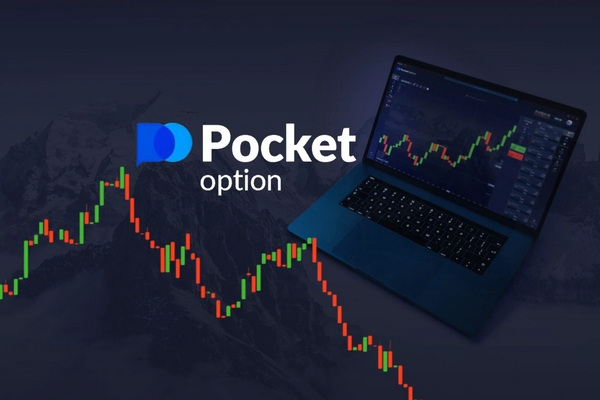pocket-option4
Mastering Live Pocket Option Trading Tips and Strategies

Live Pocket Option trading offers a thrilling experience for traders seeking to navigate the dynamic world of financial markets. Understanding how to make the most out of this platform can enhance your trading results significantly. This article will delve into essential aspects, including market analysis, trading strategies, risk management, and the importance of withdrawal processes, with a focus on live pocket option trading withdrawal Pocket Option.
What is Pocket Option?
Pocket Option is an innovative trading platform that allows you to trade various financial instruments, including cryptocurrencies, forex, stocks, and commodities. Offering live trading options, it enables traders to execute trades in real time while keeping track of market trends and movements. Launched in 2017, Pocket Option has rapidly gained popularity among both novice and experienced traders due to its user-friendly interface, advanced trading tools, and a robust educational section.
Getting Started with Live Pocket Option Trading
To embark on your live trading journey, follow these simple steps:
- Open an Account: Register on the Pocket Option website by providing basic personal information. You can choose between a demo account or a live trading account.
- Fund Your Account: Depending on your chosen account type, deposit funds using various methods like bank cards, e-wallets, or cryptocurrencies.
- Select Your Asset: Choose the financial instrument you want to trade, whether it’s stocks, forex, or commodities.
- Choose Your Trade Type: Pocket Option offers several types of trades, including binary options, digital options, and forex options. Understanding each type will help you select the right one for your strategy.
- Analyze the Market: Utilize technical or fundamental analysis to make informed trading decisions.
- Place Your Trade: Based on your analysis, invest an amount that aligns with your risk management plan and submit the trade.
Understanding Market Analysis
Your success in live Pocket Option trading largely depends on your ability to analyze market conditions effectively. There are two primary forms of analysis you can utilize:

Technical Analysis
This method involves studying historical price movements and patterns on charts to forecast future price behavior. Key components of technical analysis include:
- Indicators: Tools like Moving Averages, RSI (Relative Strength Index), and MACD (Moving Average Convergence Divergence) can help identify market trends.
- Chart Patterns: Patterns such as head and shoulders, flags, and triangles can signal potential price reversals or continuation.
Fundamental Analysis
This analysis revolves around evaluating economic indicators, news events, company earnings reports, and other macroeconomic factors that could influence asset prices. Staying informed about global economic news can enhance your trading decision-making process.
Developing Effective Trading Strategies
Establishing a trading strategy that aligns with your risk tolerance and market understanding is crucial for long-term success. Here are some popular trading strategies used on the Pocket Option platform:
1. Trend Following Strategy
This strategy involves identifying and following the direction of the market trend. Traders look for upward trends to make buy (call) options, and downward trends to make sell (put) options. Using trend indicators like Moving Averages can help clarify market direction.
2. Range Trading Strategy
Range trading takes advantage of price levels where an asset fluctuates between support and resistance. Traders buy when the price is near support and sell when it approaches resistance. This strategy works best in sideways markets with well-defined price ranges.
3. News Trading Strategy
By closely monitoring economic news releases, traders can capitalize on the volatility that follows significant news events. This strategy requires understanding how different indicators can impact market sentiment and asset prices.
Risk Management in Live Trading
Effective risk management is vital for safeguarding your trading capital. Traders should follow these guidelines:
- Set a Stop-Loss: Establish a stop-loss level for each trade to limit potential losses.
- Risk-Reward Ratio: Aim for a positive risk-reward ratio, where potential gains outweigh the risk of loss. A common ratio is 1:2 or higher.
- Diversify Your Portfolio: Avoid putting all your capital into one trade or asset class. Diversification can spread risk across different assets.
Understanding Withdrawals on Pocket Option
Once you’ve accumulated profits from your trading activities, knowing how to withdraw your funds efficiently is essential. The process is straightforward but requires awareness of the platform’s policies:
- Minimum Withdrawal Amount: Familiarize yourself with the minimum withdrawal amount, as it may vary based on your chosen payment method.
- Processing Time: Withdrawal times may differ; some methods are instantaneous, while others may take a few business days.
- Verification Process: Ensure your account is verified to facilitate a smooth withdrawal process. Verification usually entails providing identification and residency proof.
Staying Informed and Continuous Learning
The financial markets are continually evolving, and staying updated with the latest trends and knowledge is crucial. Engage in educational resources provided by Pocket Option, including webinars, tutorials, and demo trading features. Connect with other traders via forums and social media to exchange ideas and experiences.
Conclusion
Live Pocket Option trading offers an exciting opportunity for traders willing to invest time in understanding markets and refining their strategies. By leveraging effective analyses, adhering to robust risk management techniques, and knowing the withdrawal process, you can enhance your chances of success in this competitive trading environment. Always remember that continuous learning and adapting to market conditions are keys to becoming a successful trader in the long run.
